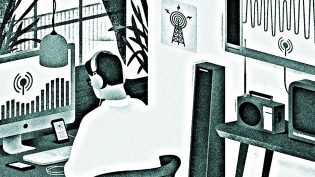While local TV is by no means perfect — see overblown crime coverage and the faux Momo challenge — it’s one of the most trusted sources of news in the United States. And for the second year in a row, according to the 2019 RTDNA/Hofstra University survey of local TV news directors, local TV news employs more people than local newspapers. (This trend will probably continue after the collapse of the Times-Picayune and the Reading Eagle, and the slicing of the Cleveland Plain Dealer, and other local print newsrooms in 2019’s first five months alone.)
The 25th year of the survey, which also includes a new infusion of local radio responses, polled 1,310 TV stations and 645 radio news directors and general managers representing 1,938 stations.
706 local TV newsrooms say they produce local news (aired by a total of 1,069 stations), contrary to the trend over the past decade when the amount of local TV newsrooms shrunk by an average of seven every year. Given the FCC’s 2017 reversal of the main studio rule — no longer requiring AM, FM, and TV stations to maintain a primary studio in or near their community of broadcast — that’s good news. But the corporations behind the stations are in full M&A mode, with Nexstar Media taking on Tribune Media’s stations, Scripps and Tegna each buying a batch from them, private-equity fund Apollo taking on Cox’s stations, and more.
Here are some more top findings from the report:
- The number of people working in local TV news is only 100 below its all-time high of 27,900 a decade ago, with 700 new jobs added in the past year.
- The amount of airtime given to local news each weekday is also up, by 18 minutes, for a record 5.9 hours of news per weekday.
- Investigative reporting is getting more attention from news directors, with over half of stations saying it’s the top area they’re focusing on more.
- TV stations say they’re going to push out less and take in more: Push alerts will be toned down (or at least more strategic), and they plan to lean on community engagement: “While fewer TV News Directors in each of the past two years have reported trying something new on social media, social strategy is maturing and changing for local broadcasters, who now are more likely to report incorporating social listening, groups and live discussion or engagement.”
- A majority — 55 percent — of local TV stations now have at least one drone, up from 45 percent last year and less than 20 percent in 2017.

On the radio side, two-thirds of newsroom managers say they run local news (73 percent of AM stations and 67 percent of FM stations, separately) and many are hiring specifically for beat coverage, including education, government, health, and innovation. Twenty-five percent of radio newsrooms respondents were nonprofit and more of the commercial stations said they were breaking even. (
Yes, people still listen to the radio!) But managers are trying to expand their audiences with podcasts, events, and newsletters — just like the rest of the industry.
Read the full report, with hefty links to the broken-down data, here.
Show tagsHide tags
Leave a comment